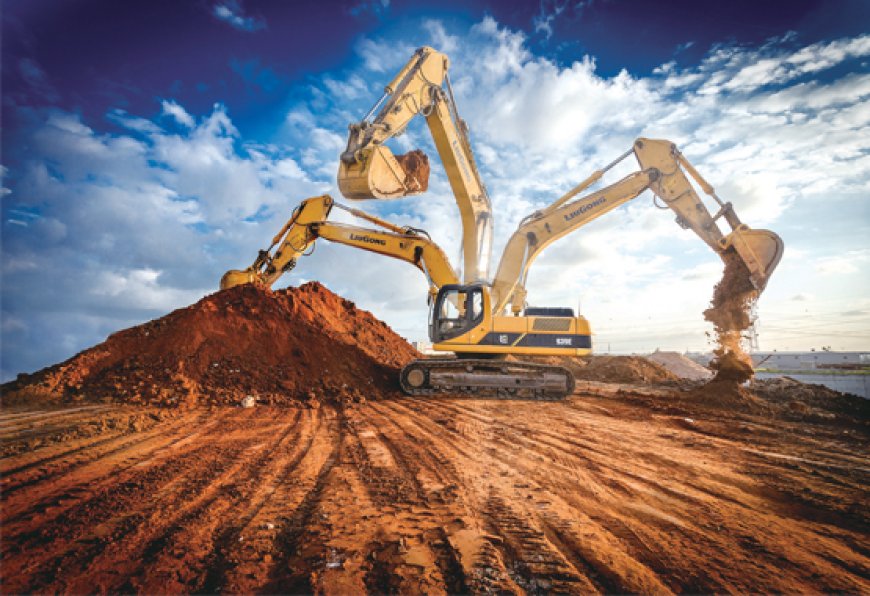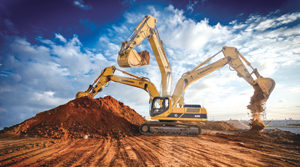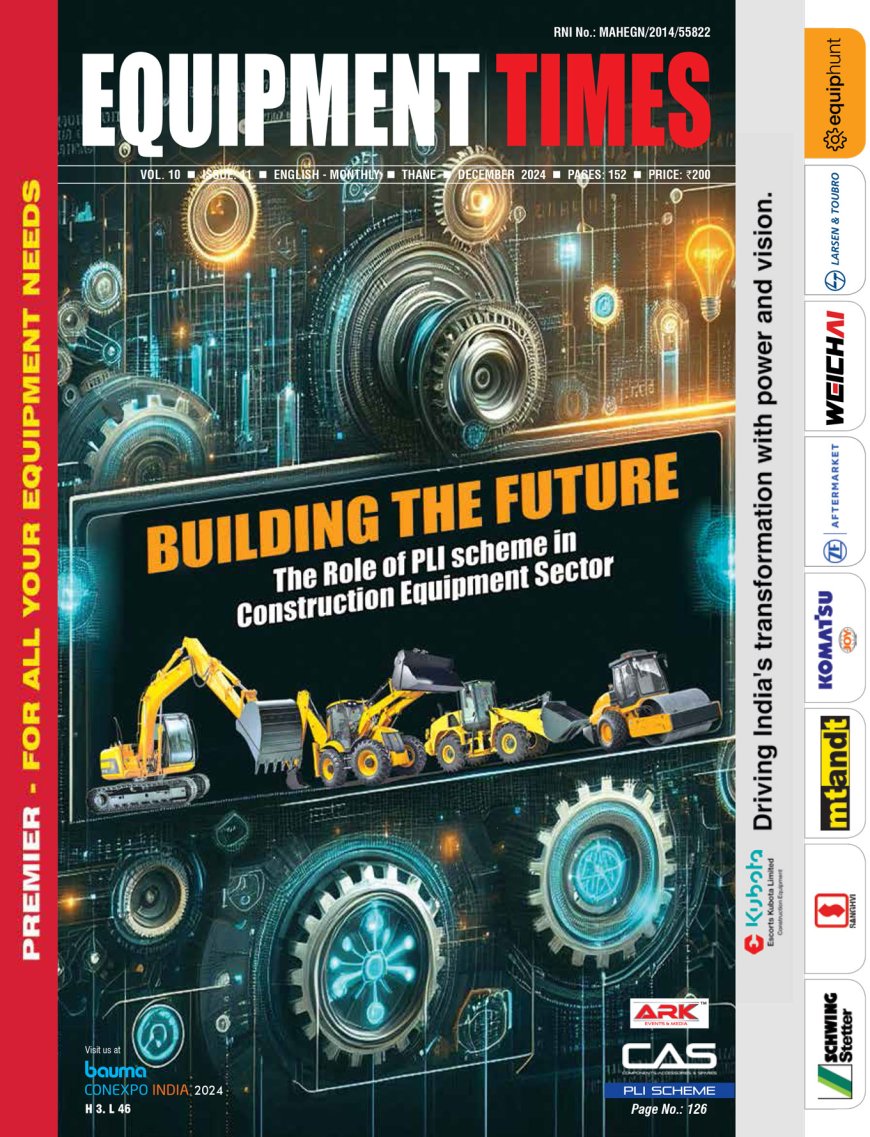Profitability The Name of The Game
Throughout the entire value chain of a product, irrespective of the stakeholders included – be it component suppliers, original equipment manufacturers, end-user segments – profitability has become the name of the game. Increasing demand for higher productive machines with lesser

Throughout the entire value chain of a product, irrespective of the stakeholders included – be it component suppliers, original equipment manufacturers, end-user segments – profitability has become the name of the game.
 Increasing demand for higher productive machines with lesser fuel consumption and longer component life reflect this paradigm shift. Leveraging the efficacy of telematics or data driven technology, has added another dimension to the game. No wonder, even consumption of spares and other running items and the cost thereof have become very important while choosing fleet size and make of equipment. This has also helped zoom in on operator comfort which has had a significant impact on productivity resulting in better cab design and focus on operators comfort and working environment inside the cab.
Increasing demand for higher productive machines with lesser fuel consumption and longer component life reflect this paradigm shift. Leveraging the efficacy of telematics or data driven technology, has added another dimension to the game. No wonder, even consumption of spares and other running items and the cost thereof have become very important while choosing fleet size and make of equipment. This has also helped zoom in on operator comfort which has had a significant impact on productivity resulting in better cab design and focus on operators comfort and working environment inside the cab.
Shift in Concepts
Vivek Hajela, General Manager & Head, Construction Equipment Business, Larsen & Toubro Limited explains the changing scenario. Productivity was always the most important yardstick for evaluating machines by customers who were using it for production-intensive applications like irrigation projects, roads, railways, and quarrying, where completion time was the essence. In fact, what customers need is the lowest cost of production. Hence, TCO divided by total production equals cost of production. As a result, TCO and productivity cannot be delinked.” He adds, “With increase in mechanization, where machines found application in less production intensive areas that customers started considering low-cost machines and lessened their focus on productivity. Customers in the hiring sector consider L/hr only, while Tones/ Litre or Cum/lit of fuel is an appropriate measure of machine performance.”
“Where future technology is concerned, Volvo’s pursuit of electrically-driven vehicles could be a game changer. Recently, our company unveiled the world’s first fully-electric compact excavator, the EX2, which is equipped with electric drive systems and electromechanical linear actuators. While it is too early to say if there will eventually be a shift towards electric engines in the market, Volvo CE believes that going electric is the future of our industry. The EX2 prototype shows our determination to provide zero-emissions machines in the future which will have the same power and force as conventional equipment,” Dimitrov Krishnan, Vice President & Head, Volvo CE India.
Market Trends
Says Hajela “The HEX market grew by 40% in FY16-17 and 25% in FY17-18. The growth is expected to be 20% for FY18-19 and we expect the industry to touch 24,000 plus machines. At these levels, we expect the manufacturers to operate their facilities to their full capacity.” He adds, “Currently, roads and general construction are the key demand drivers and the demand in these segments is growing at more than 30%. A growth in these segments is also driving the demand for aggregates. The quarrying activity is growing by 25%. The government continues to be focused towards infra development and infrastructure spending in FY1819 is expected to be 10% of GDP. We expect to have a healthy order book for the next couple of years.”
According to Krishnan, the industry expect a Compounded Annual Growth Rate (CAGR) of between 5% and 7%. Krishnan states, “For Volvo CE, in India we are seeing most activity in the road building sector with numerous projects progressing. Understandably we are seeing the highest levels of demand for excavators, compactors and pavers for this application and its associated industries. For other sectors, such as mining and general construction, activity levels have not been so high and therefore demand for equipment is not so high. Over the next three to five years, we expect a Compounded Annual Growth Rate (CAGR) of between 5% and 7%.”
Over the past few years, the tracked excavator segment has gained popularity at Indian construction sites. They are now increasingly being used across sectors such as roads and highways, railways, irrigation, and mining etc. “With government’s continuing thrust on large scale infrastructure projects, we foresee a favourable rise in the demand of tracked excavators in the coming years,” says Jasmeet Singh, Head-Corporate Communications and External Affairs, JCB India.
Tracking over half a decade’s growth of excavator market Sharwan Agnihotri, Head – Marketing & Business Development, Hyundai Construction Equipment India explains, “After consistent decline for about three years after 2011, excavator demand showed marginal growth of around 8% in 2015 over 2014. The growth, however, in 2016 has been very strong. It was majorly driven by new project announcements and speeding of existing projects in road sector. The demand in 2016 grew by more than 45% over 2015. The demand continued to be strong in 2017 on the back of government’s focus on speed of making roads. The demand in 2017 grew by around 22% over the same period in 2016,” However he adds, “To make the growth sustainable and balance out supply issues for specific segment of machines, other sectors like irrigation, railways, urban development and mining should start showing some visible improvement on the ground.”
Speaking about the growth drivers, Nischal Mehrotra, Director (Sales & Service), LiuGong India had this to say. “Infrastructural development continues to be the key growth driver in India and while country is making strong progress, there is still much to be done. In India we are witnessing most activities in the road building sector with numerous projects progressing. Understandably, we are witnessing the highest level of demand for excavators and other road building machineries. In 2017 the total market for excavator gone up touching 20,000 units. We expect to have a CAGR 15% growth in 2018. Government’s emphasis on connecting the length and breadth of India with its ambitious projects like Bharatmala, achieving about 40 km per day in near future in road construction, river linking projects, first high-speed rail corridors, new projects for metro rail, ports, airports, dams and railways lined up, the demand for crawler excavators is expected to go high. The Indian CE industry will witness growth due to modernization in the infrastructure, mining and construction sectors in India.”
The following interviews with leading players shed light on the changing trends in the excavator market.
Hits: 45










